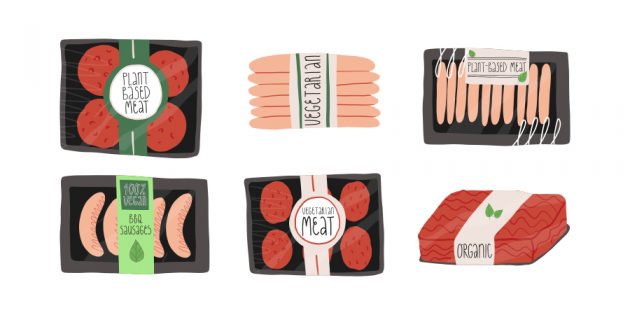
Food Law: Legal challenges for simulated meat and poultry makers
By Lewis Retik and Victoria Asikis
Regulation Plant-based foods Canadian Food Inspection Agency Food and Drug Regulations food law Photo © Katty Sever / Adobe Stock
Photo © Katty Sever / Adobe Stock It is undeniable that one of the largest developments in food in recent years has been the proliferation of plant-based products. Whether it is ice-cream alternatives made with coconut or milk alternatives created with cashews, nearly every animal product has a substitute that does not contain animal-derived ingredients. From a consumer perspective, this means there are potentially more options on the grocery shelf. However, from the perspective of companies developing and selling meat alternatives, the situation in Canada is challenging. Recently proposed guidelines for these products may, in reality, result in more constraints.
Regulations
At present, the federal Food and Drug Regulations (FDR) has compositional requirements for simulated meat and poultry products. These products only have the appearance of meat or poultry and not the actual meat or poultry. Under FDR, most simulated meat and all simulated poultry products must contain a minimum amount of protein and fat and be fortified with vitamins and minerals. All of these products must meet their corresponding compositional requirements to be sold in Canada.
These regulations have historically posed a number of challenges for the industry. For example, the minimum protein requirements in Canada are higher than other countries. Fortification is also not mandatory in other countries producing and selling simulated meat and poultry products, most notably in the United States, Canada’s largest trading partner. Brand owners are obligated to reformulate their products to Canada’s standards in order to sell them here. This often results in products that may not meet the same texture or taste profile as the non-Canadian versions. Alternatively, brand owners do not even attempt reformulating to sell their products in Canada. Companies wishing to sell alternative meat products in Canada have advocated for years to change the mandatory compositional requirements to allow for more flexibility in the development and formulation of these products.
New guidelines
In the fall of 2020, the Canadian Food Inspection Agency (CFIA) released proposed guidelines for simulated meat and simulated poultry products. The guidelines better delineated the difference between a product that is in the shape of meat or poultry products but may not be attempting to simulate the same taste and/or texture from products that are intentionally trying to simulate meat or poultry. This was helpful in providing industry additional clarity as to when it did not need to consider the fortification or macro nutrient requirements of the simulated meat or poultry provisions in FDR.
However, brand owners were hoping Health Canada would adopt a more flexible approach to the formulation of simulated meat and poultry products. In this regard, there is no proposal to amend the regulatory requirements, and therefore, at least for now, the law has not changed.
This poses a unique challenge going forward. For brand owners who were hoping the law would evolve with changing consumer demand and global manufacturing trends of these foods, the guidelines were disappointing, as they did not address the longstanding issues facing industry. These companies are hoping Canada’s legislation will progress to strike a reasonable balance between the need for these products to meet certain compositional requirements and allowing broader availability of these products in Canada. At this point, it is unclear whether companies will choose to formulate for the Canadian market or continue to limit products sold in this market.
The public comment period on the guidelines closed in early December 2020, and any potential revisions to the proposals are yet to be disclosed by CFIA. For now, when it comes to simulated meat and poultry products in Canada, one thing is for sure: the more things change, the more they stay the same.
Lewis Retik is a partner in the Ottawa offices of Gowling WLG. He is leader of the food and beverage group and co-leader of the cannabis group. He can be reached at lewis.retik@gowlingwlg.com.
Victoria Asikis is an associate in the Ottawa offices of Gowling WLG, focusing on food and product regulatory law. She can be reached at victoria.asikis@gowlingwlg.com.
This article was originally published in the June 2021 issue of Food in Canada.
Print this page